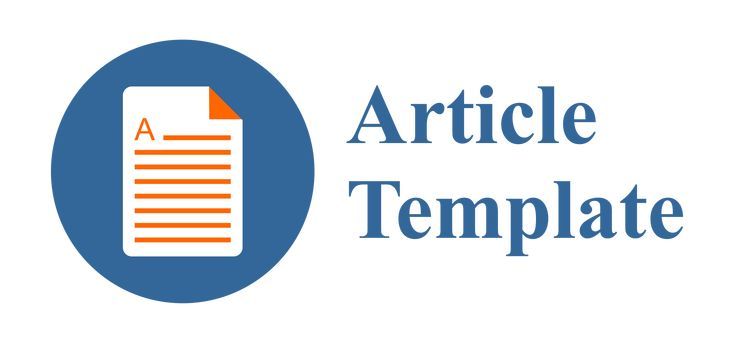Evaluasi Penerimaan Modul Kepegawaian SIESTA Menggunakan Model Utaut2
DOI:
https://doi.org/10.29408/edumatic.v4i1.1989Keywords:
Disproportionate Stratified Random Sampling, SEM-PLS, System Acceptance, UTAUT2Abstract
The successful application of information technology largely depends on the level of acceptance of each user. Therefore, accurate interpretation and estimation are needed so that user acceptance can be increased. This also happened to SIESTA, which until now has never been examined the acceptance of the system. The purpose of this study is to be able to understand aspects that have an influence on the acceptance of the modul Kepegawaian SIESTA with the UTAUT2 model up to the RSUD Dr. Soetomo Surabaya can utilize the results of research in implementing other SIESTA modules. The sampling technique was determined by the disproportionate stratified random sampling technique and the sample size used was 359. The analysis of the data and the results of the SEM-PLS hypothesis test prove that behavioral intention is significantly influenced by social influence and price value aspects. While aspects of facilitating conditions and habits have a significant impact on aspects of use behavior. There are no aspects of moderator age, gender, and experience that meet significant criteria. Then it can be seen that age, gender, and years of service do not strengthen the influence of core aspects on the acceptance of the modul Kepegawaian SIESTAReferences
Akbar, M. R., Irianto, G., & Rofiq, A. (2018). Purchase Behaviour Determinants on Online Mobile Game in Indonesia. International Journal of Multicultural and Multireligious Understanding, 5(6), 16–27.
Bloch, M., Blumber, S., & Laartz, J. (2012). Delivering large-scale IT projects on time, budget and value. McKinsey Quarterly.
Butarbutar, F. T. S., & Haryanto, Y. (2017). Kajian Signifikansi Faktor yang Mempengaruhi Penggunaan E-Learning pada Siswa SMK Global Informatika Tangerang. Jurnal RESTI, 1 No. 1, 9–18.
Eisingerich, A. B., & Rubera, G. (2010). Drivers of Brand Commitment: A Cross National Investigation. Journal of International Marketing, 18 (2), 27.
Geldmacher, W., Just, V., Kirschner, C., Buchmuller, M., & Marquardt, K. (2017). The Correlation of Information and Knowledge in Regard to The Acceptance Level and Their Implication on Self-Driving Cars in Germany. Ecoforum Journal, 6 No. 13(3).
Ghozali, I. (2014). Structural Equation Modeling Metode Alternatif dengan Partial Least Squares (PLS). Semarang: Universitas Dipenegoro Semarang.
Hair, J. F., Hult, G. T. M., Ringle, C. M., & Sarstedt, M. (2017). A Primer on Partial Least Squares Structural Equation Modeling (PLS-SEM) 2nd Edition. California: SAGE.
Issaramanoros, E., Khlaisang, J., & Pugsee, P. (2018). Auto Mechanic Students’ Perceptions and Readiness toward Mobile Learning in Thailand. International Journal of Interactive Mobile Technologies, 12 (5), 28–42.
Moura, A. C. de, Gosling, M. de S., Christino, J. M. M., & Macedo, S. B. (2017). Acceptance and Use of Technology by Older Adults for Choosing A Tour-ism Destination: A Study Using UTAUT2. Brazilian Journal of Tourism Research, 11 (2), 239–269.
Mutlu, H. M., & Der, A. (2017). Unified Theory of Acceptance and Use of Technology: The Adoption of Mobile Messaging Application. International Scientific Conference on Economic and Social Development, 14 (1), 169–186.
Nanggong, A. (2018). Perilaku Pasca-Adopsi Teknologi Personal terhadap Intensi Perilaku Berkelanjutan. Jurnal Manajemen Teknologi, 17 (1), 10–26.
Nugraha, S., & Yadnyana, K. (2018). Penerapan Model UTAUT dalam Menjelaskan Faktor Minat dan Penggunaan Sistem Informasi Manajemen Daerah. E-Jurnal Akuntansi Universitas Udayana, 24 (2), 959–987.
Palos-Sanchez, P., & Saura, J. R. (2018). The Effect of Internet Searches on Afforestation: The Case of A Green Search Engine. Forests, 9 (51), 1–24.
Pertiwi, N. W. D. M. Y., & Ariyanto, D. (2017). Penerapan Model UTAUT2 untuk Menjelaskan Minat dan Perilaku Penggunaan Mobile Banking di Kota Denpasar. E-Jurnal Akuntansi Universitas Udayana, 18 (2), 1369–1397.
Prasetyo, D. Y. (2017). Penerapan Metode UTAUT (Unified Theory of Acceptance and Use of Technology) dalam Memahami Penerimaan dan Penggunaan Website KKN LPPM UNISI. Jurnal SISTEMASI, 6 (2), 26–34.
Quadahi, J. (2008). A Qualitative Analysis of Factors Associated with User Acceptance and Rejection of a New Workplace Information System in the Public Sector: A Conceptual Model. Canadian Journal of Administrative Sciences, 201–213.
Samaradiwakara, G. D. M. N., & Gunawardena, C. G. (2014). Comparison of Existing Technology Acceptance Theories and Models to Suggest A Well Improved Theory/Model. International Technical Sciences Journal, 1 (1), 21–36.
Tavares, J., & Oliveira, T. (2017). Electronic Health Record Portal Adoption: A Cross Country Analysis. BMC, 17 (97), 1–17.
Venkatesh, V., Morris, M. G., Davis, G. B., & Davis, F. D. (2003). User Acceptance of Information Technology: Toward A Unified View. MIS Quarterly: Management Information Systems, 27 (3), 425–478.
Venkatesh, V., Thong, J. Y. L., & Xu, X. (2012). Consumer Acceptance and Use of Information Technology: Extending the Unified Theory of Acceptance and Use of Technology. MIS Quarterly: Management Information Systems, 36 (1), 157–178.
Wonjun, L., & Shin, S. (2019). An Empirical Study of Consumer Adoption of Internet of Things Services. International Journal of Engineering and Technology Innovation, 9(1), 01–11.
Yalina, N., & Iriawan, N. (2011). Evaluasi Penerapan Sistem Informasi Perencanaan Pembangunan Daerah Pemerintah Provinsi Jawa Timur Menggunakan Metode TAM. Prosiding Seminar Nasional Manajemen Teknologi XIV, (978-602-97491-3–7), 1–8.
Zaini, W. H. A., Hamad, M. K., & Najim, A. S. (2020). Factors Affecting The Adoption of An Accounting Information System Based on UTAUT2 and Its Implementation in A Tourism Corporation. African Journal of Hospitality, Tourism and Leisure, 9 (1), 1–14.
Downloads
Published
How to Cite
Issue
Section
License
Semua tulisan pada jurnal ini adalah tanggung jawab penuh penulis. Edumatic: Jurnal Pendidikan Informatika bisa diakses secara free (gratis) tanpa ada pungutan biaya, sesuai dengan lisensi creative commons yang digunakan.

This work is licensed under a Lisensi a Creative Commons Attribution-ShareAlike 4.0 International License.




